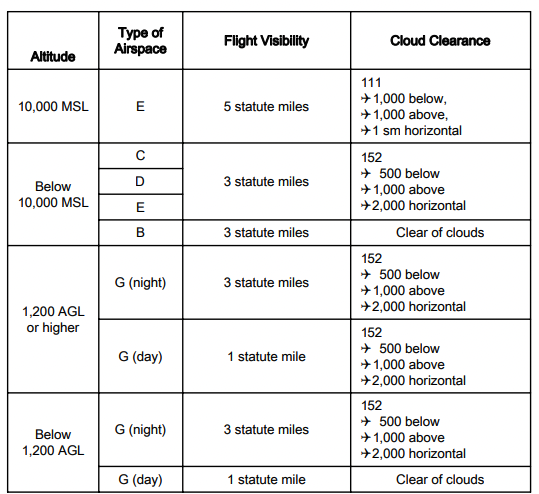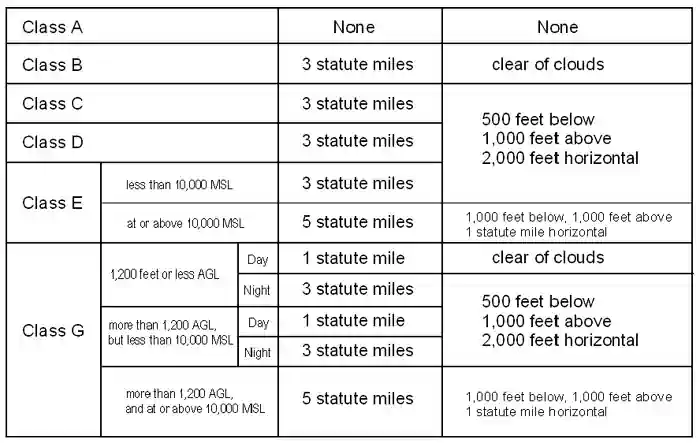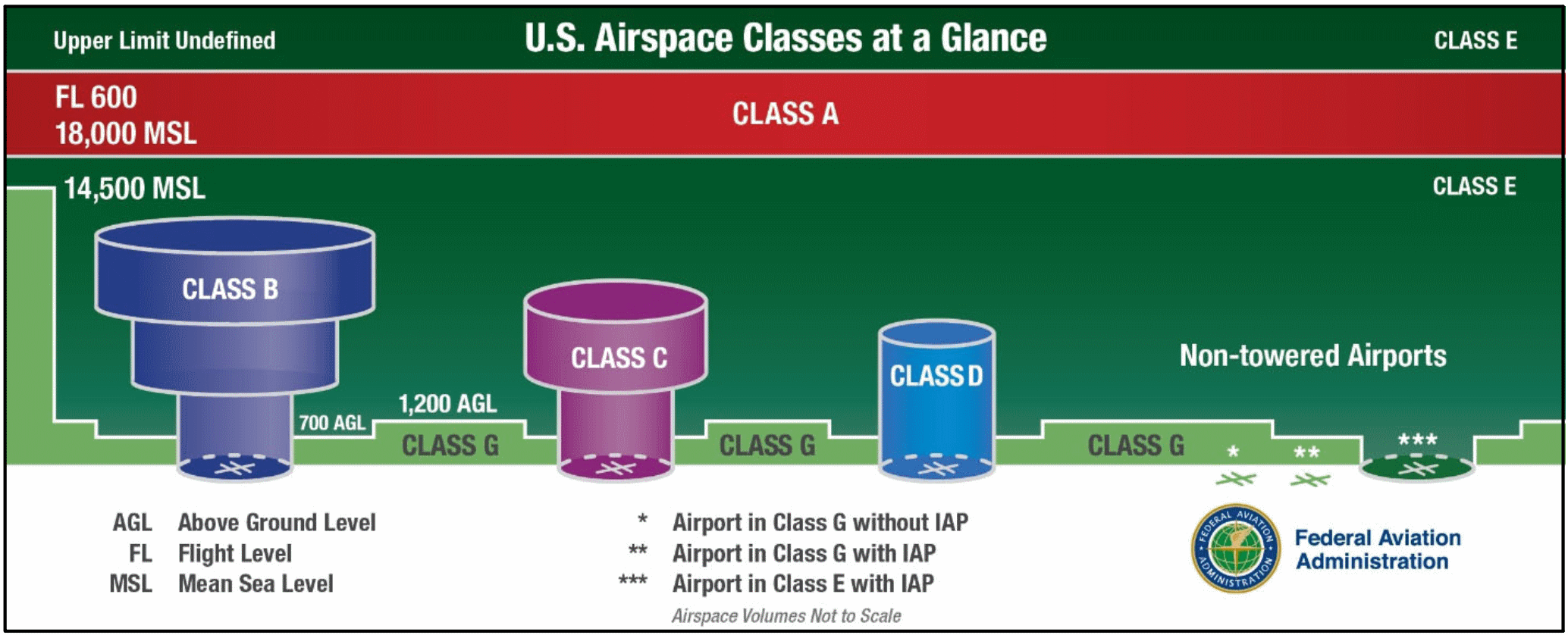class g airspace visibility requirements
1200 or less above the surface regardless of MSL altitude Flight Visibility. Class G airspace allows IFR and VFR operations.
Day except as provided in 91155 b 1 statute mile.

. Minimum flight visibility and distance from clouds required for VFR flight are contained in 14. VFR visibility requirements in class G airspace are 1 mile 16 km by day and 3 miles 5 km by night for altitudes below 10000 feet 3050 m MSL but above 1200 ft AGL. August 16 2018 by ETL.
In accordance with FAR 91155. Day - 1 Statute Mile Night - 3 Statute Miles. Air Traffic Control Facility.
Related Article Class G Airspace Explained. 1200ft or less above the surface regardless of MSL altitude Day. A Unless otherwise specified in the certificate holders operations specifications when conducting VFR helicopter air ambulance operations in Class G airspace the weather minimums in the following table apply.
1200 ft AGL or Below Day. Rules governing VFR flight have been adopted to assist the pilot in meeting the responsibility to see and avoid other aircraft. June 4 2021.
Class G airspace uncontrolled is that portion of airspace that has not been designated as Class A Class B Class C Class D or Class E airspace. Class G Uncontrolled Class G is considered uncontrolled airspace but still has VFR weather minimums. VFR minimums at night below 10000 msl but higher than 1200 above the surface agl are.
At night in Class G between 1200 AGL and 10000ft MSL the visibility and cloud clearance are the same as Class CD. 1200 ft AGL or Below Night. What are the visibility requirements for Class G airspace.
Class G Airspace Weather Visibility Requirements. 1200 feet or less above the surface regardless of MSL altitude For aircraft other than helicopters. Although Class G is uncontrolled it is also subject to the most weather restrictions based on where the airspace is located.
Class G airspace allows IFR and VFR operations. During the day less than 1200 AGL in class G airspace the flight visibility requirements are ½ statue mile and the cloud clearance requirements are to remain clear of clouds. There are a few nuances here so pay attention.
Above 10000ft MSL the requirements are 5 SM visibility and cloud clearance of 1000ft above 1000ft below and 1 SM horizontally. In the airspace highlighted below Class E starts at 1200 AGL so Class G automatically starts at the surface and extends to - but doesnt include - 1200 AGL. 500 Below 1000 Above 2000 Horizontal.
10 rows G night 3 statute miles 152 4500 below 41000 above 42000 horizontal G day 1 statute mile. 1 statute mile visibility and clear of clouds. VFR Minimum Visibility Below 10000 MSL.
135609 VFR ceiling and visibility requirements for Class G airspace. A Unless otherwise specified in the certificate holders operations specifications when conducting VFR helicopter air ambulance operations in Class G airspace the weather minimums in the following table apply. Class G airspace is defined wherever Class A and Class C airspaces are not defined.
These minimums cover most Class G airspace but are only valid during the daytime when you are within 1200 agl of the surface. Visibility requirement 3 statute miles. VFR Minimum Distance from Clouds Below 10000 MSL.
500 Below 1000 Above 2000 Horizontal. 3sm visibility 1000 above clouds 500 below clouds and at least 2000 horizontal from clouds. Visibility requirement 1 statute mile.
500 Below 1000 Above 2000 Horizontal 500 Below 1000 Above. At night less than 1200 AGL in Class G airspace the helicopter flight visibility requirements are 1 statue mile visibility and cloud clearance. Night except as provided in 91155 b 3 statute miles.
For altitudes less than 3000 metres 9800 ft the speed must not exceed 450 kilometres per hour 280 mph. Flight visibility of 3 statute miles SM Cloud clearance of 1000 above 500 below and 2000 horizontally except for class B which simply requires pilots to remain. Weather Requirements Class G minimum weather requirements exist so that you can see and avoid other aircraft and stay out of the clouds.
12 rows 1200 feet or less above the surface regardless of MSL altitude 1 statute mile. Class G is completely uncontrolled. 36 rows Notwithstanding the provisions of paragraph a of this section the following.
B A certificate holder may designate local flying areas in a manner. On the other hand Class G airspace has four different sets of altitude-dependent minimums. For Class B C D and E airspace below an altitude of 10000 MSL the basic VFR weather minimums are.
Distance from clouds requirement Clear of clouds. Class G airspace is not depicted on any chart. 135609 VFR ceiling and visibility requirements for Class G airspace.
How To Remember Vfr Weather Minimums Bobbie Lind
How To Remember Vfr Weather Minimums Bobbie Lind

Ifr Vs Vfr In Aviation Understanding The Differences Pilot Institute
Regulations Vfr Minimums Learn To Fly Blog Asa Aviation Supplies Academics Inc

Class G E Vfr Visibility Requirements Cheat Sheet I Made R Flying

This Is How Class G Airspace Works Boldmethod



